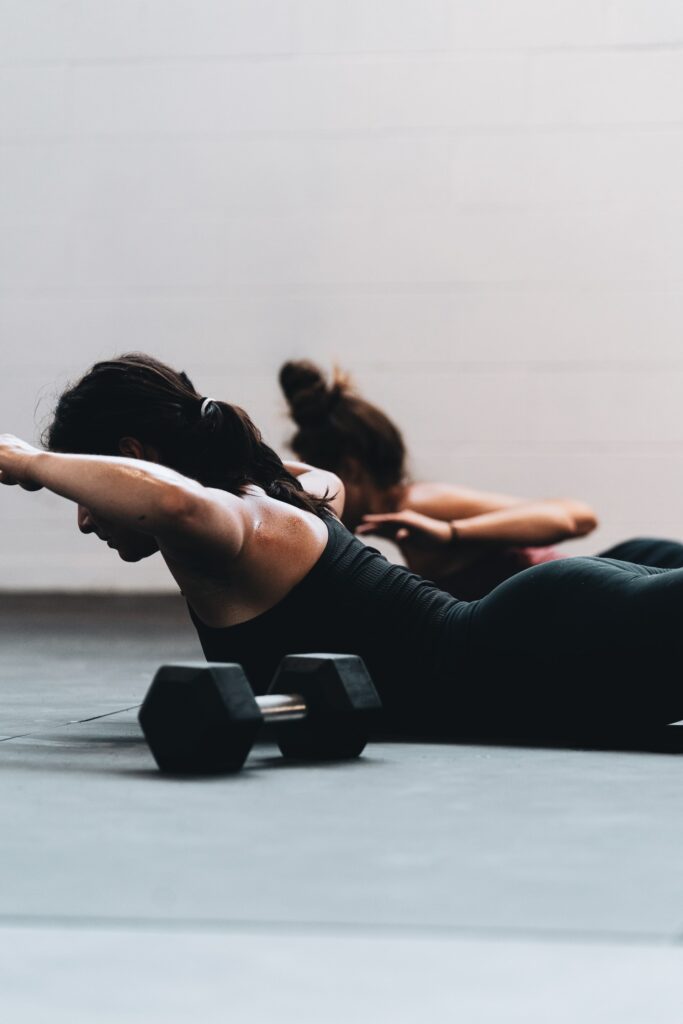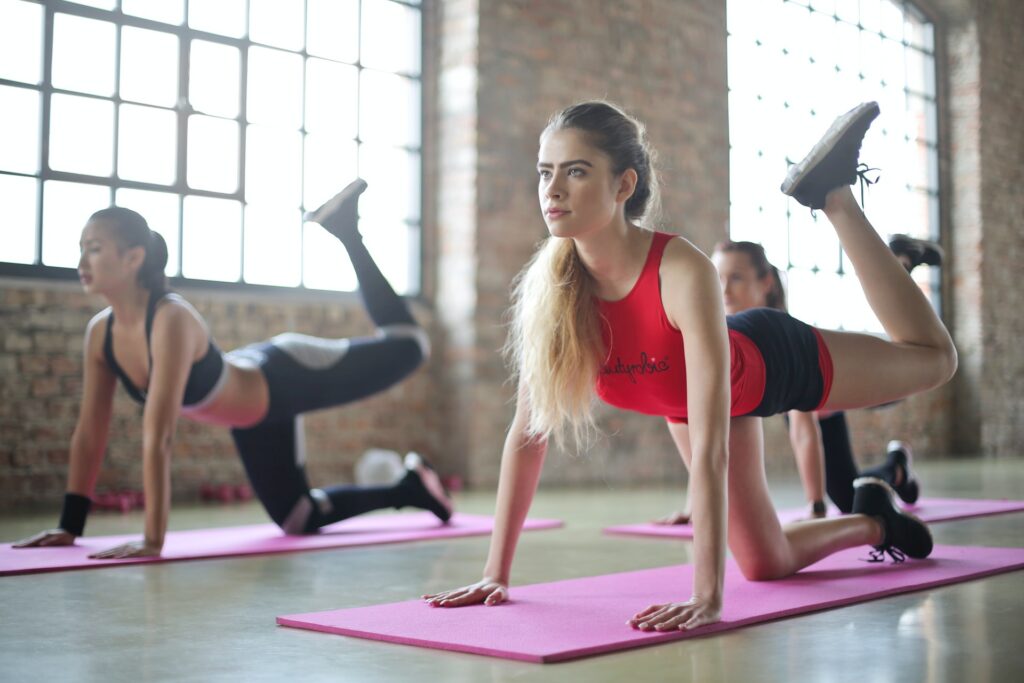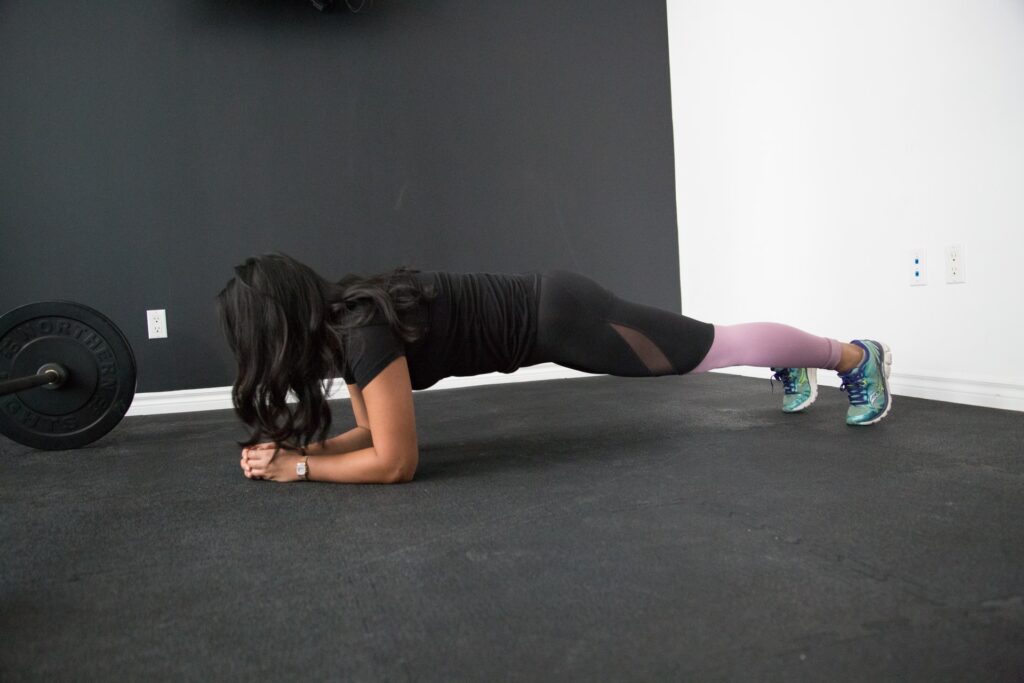3 Reasons to Brace your Core
Not only is bracing your core important for exercise but also for everyday life. How often do people report an injury from lifting a box, or picking up an item off the floor?
As a healthcare worker, I know all too well about lifting heavy patients and items in the hospital. I know that the occurrence of a staff members hurting themselves and overexerting themselves into injury is way too high. So, discover 3 benefits to bracing your core

Did You Know?
Your core is the part of your body that protects your spine and helps keep you balanced. In the exercise world, this part of your body is often referenced in association with abdominal muscles because both work together when you perform all activities. Although several muscles make up your abdomen, we won’t get into that. All I want you to take away from this is that you can prevent injury and so much more by bracing your core.
The term “bracing your core” is defined as an act of engaging your abdominal muscles to create stability for movement. It is a process that can make a difference in the power of movement at the gym and the prevention of injury and strain. It is marked as contracting your abdominal muscles so your midsection can be rigid and using your breath to create intra-abdominal pressure that in turn stabilizes your body and protects the spine. The significance of this lies in the fact that the abdomen and abdominal muscles are the bridge and framework for the center of the body, connecting your head and arm with your legs and feet. Therefore, when stabilized, your body can effectively exert force without the risk of injury or strain.

3 Benefits of Bracing Your Core
- You will prevent injury and strain
The core muscles are part of a kinetic chain that includes your hips, lower back, and pelvis. Therefore, having better core stability prevents the occurrence of an injury due to overall equilibrium. When your core is not engaged, pressure can be exerted on your lower back, and this can create a muscle or ligament strain. This is noted to be the most common cause of lower back pain apart from a ruptured disc, arthritis, and scoliosis.
2. Good posture
Good posture becomes a byproduct of engaged core muscles. Since your core muscles wrap your entire torso, an upright posture is inevitable.
3. Reduce and prevent pain
As the core muscles support your back, hips, and pelvis, you will be less likely to induce injury and as mentioned above, an improved posture also will prevent neck and shoulder pain.

What Should You Do About It?
Please be aware of special considerations for those with past injuries. If you have lower back pain or difficulties with mobility, consult a professional in the form of a physical therapist or a trainer at your gym. It is important to not exacerbate any problems that you may have incurred in the past.
How To Make It SMART
SHORT– Chances are that if you are curious about your core, back pain, and preventing injury, you are aware of your body and the need for appropriate movement. If you engage in a fitness space or receive physical therapy, speak to your trainer about how to better engage your core
MEASURABLE- The great thing about fitness and mobility goals is that they can be easily measurable in the form of improved mobility and strength. There are exercises that you can do to measure your progress like planks. Believe me when I say that the plank is a great core staple that can be diversified for intensity and continued progress. Measure your baseline before you begin and then implement a plank into your routine and monitor your progress. Maybe when you start, you cannot hold the plank for a minute or do 30-second mountain climbers or standing ab exercises.
ATTAINABLE- Depending on your level of mobility, you might have to amend the exercises you can perform. Find a fitness professional who can assess your baseline, recommend appropriate exercises, and monitor your performance
REASONABLE- Is it possible to implement? I think this relates to whether it is an appropriate exercise for you. Therefore, I recommend having a professional supervise if you are a beginner.
TIMELY- Commit to a workout regimen that targets your abdominal muscles and core. Physical progress is not evident until about 8 weeks of consistent work. This does not mean you won’t notice the strength and improvement in between. This is just a standard metric based on visible appearance so don’t be surprised if you have a leaner mid-section

Remember, choosing health is a lifelong journey and commitment, not a quick fix.
As always,
Love yourself in health, one day at a time



